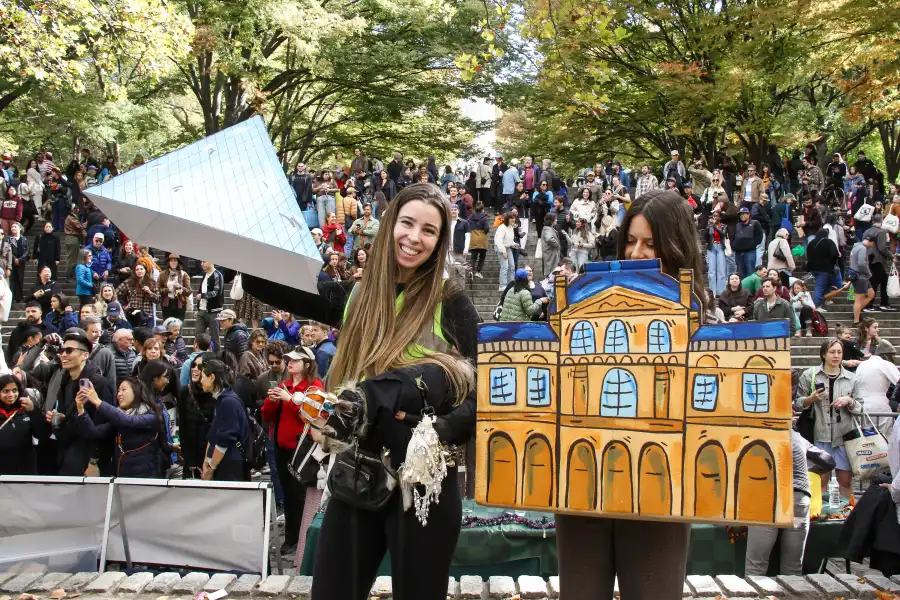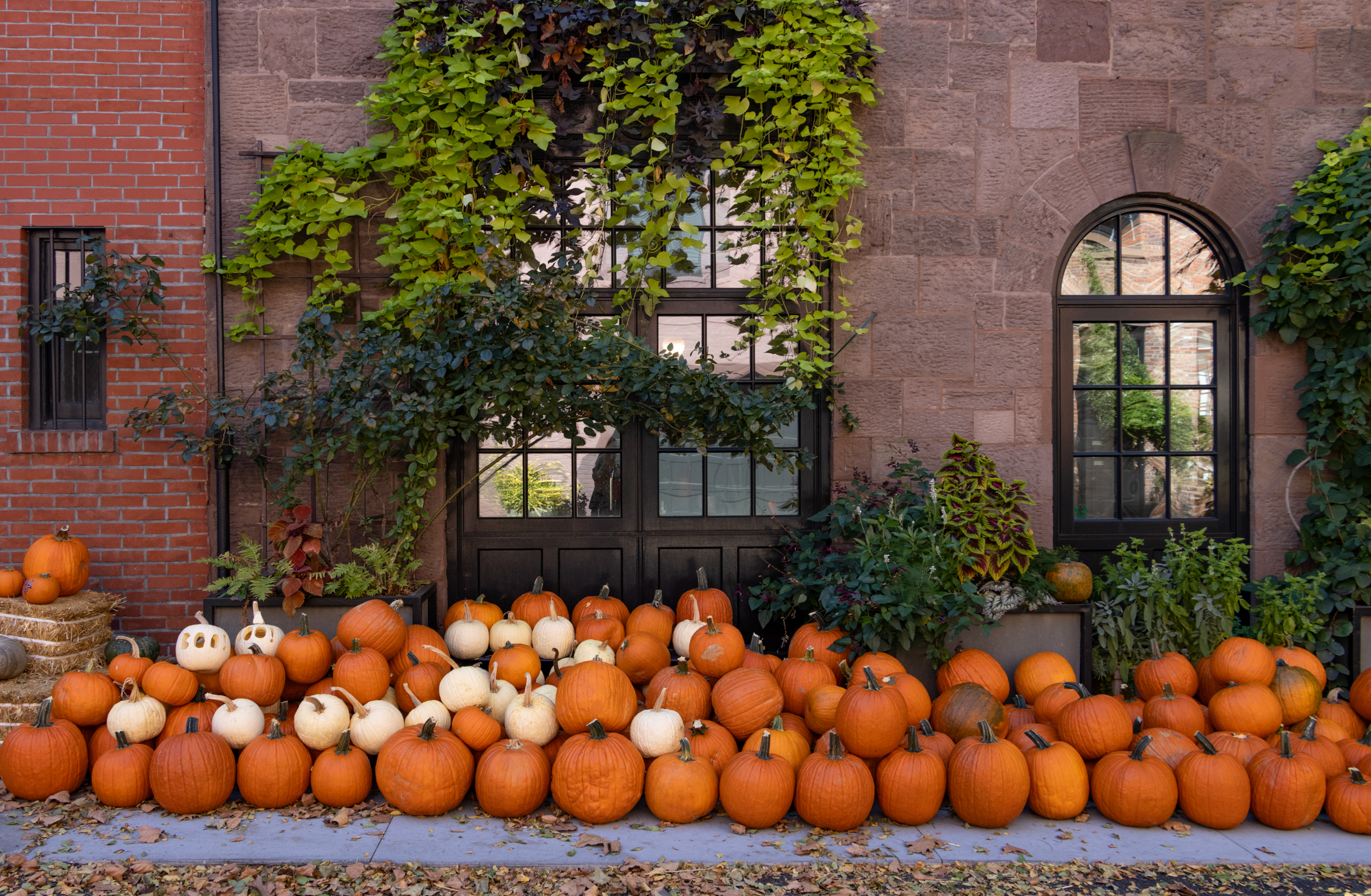Walkabout With Montrose: Through Colored Glass, Brightly
Colored glass has been with us in some form since ancient times, both the Egyptians and Romans crafted exquisite small colored glass bowls and vases. 4th and 5th century Christians used thinly sliced pieces of alabaster in their windows, which allowed diffused light, but it was the Muslim architects of the same time who first…


Colored glass has been with us in some form since ancient times, both the Egyptians and Romans crafted exquisite small colored glass bowls and vases. 4th and 5th century Christians used thinly sliced pieces of alabaster in their windows, which allowed diffused light, but it was the Muslim architects of the same time who first formulized and placed stained glass in the windows of the mosques of the Middle East.
Stained glass, which is made by adding metal salts to molten glass, reached its heights during the Middle Ages in Europe, and has been fascinating us ever since.
Its remained in primarily an ecclesiastic domain for hundreds of years, but during the 19th century, as all things became decorative, stained and painted glass began to be created specifically for use in more and more residential buildings, and its premier artisans began to create some of their finest works for secular residential use.

I use stained glass as an overall catch phrase to include colored or pot glass, painted glass and late Victorian opalescent glass invented by Louis Comfort Tiffany. Most of us are now familiar with the names of Tiffany, La Farge and Lamb, whose magnificent creations graced the mansions, churches, and clubs of the rich.
However, simpler stained glass panels were inexpensive, and popular enough to be mass produced by many companies, and incorporated into the homes of the middle class, and thankfully, quite a bit remains to this day. Brooklyn has some world class examples of important glass works.
The earliest is probably Minard Lefever’s great 1840’s church, St. Anne and the Holy Trinity, in Brooklyn Heights, home to the magnificent windows of William Jay Bolton. The works of the late Victorian glass studios of Tiffany, La Farge, Lamb, Hunt, and others, are also found throughout Brooklyn.

Brooklyn’s great architects, known and unknown, used stained glass to great decorative affect in our neighborhoods.
We can often see the transom windows, fan windows and other decorative windows from the street, often in great profusion, which leaves one wondering what treasures are in the interior or rear windows that we can’t see; fine glass in cabinets, interior doors, bathroom windows and partitions.
The Bed Stuy homes designed by Montrose Morris are especially rich in visible stained glass, and some blocks, such as Hancock Street and Arlington Place, simply sparkle. Unfortunately for us on the street, this glass was meant to be viewed from the inside, with light streaming through it, and photos taken from the street cannot capture the beauty of that light.

Even so, the intricacies of the patterns, the mixtures of colored, opalescent, bulls eye, painted, and bejeweled glass is still impressive to passersby to choose to look. I’ve assembled a collection of sacred and secular windows, and have been fortunate enough to been able to include some interior shots, as well.
I love stained glass. I’ve seen some amazing glass over the years, in houses for sale, and on house tours and the homes of friends. I’ve watched houses that I passed everyday on my way to work lose their glass to renovation, theft and salvage, and I’ve been lucky enough, on occasion, to have rescued a few small pieces, literally from the trash heap.
Ironically enough, the house I ended up buying has none whatsoever, dammit, but it’s easy to see that I once had stained glass in the many transom windows in my bays, and probably elsewhere, as well. I have plans for restoration, someday.

As per usual, my haunts of Crown Heights North and Bed Stuy have yielded some great examples, and as I wander around more of the city in the months to come, I will revisit this and other decorative topics. In the meantime, look around your neighborhood, this art is everywhere, if you only look.

Here is a list of some of the great Tiffany Studio works in Brooklyn:
Brooklyn Heights First Presbyterian Church, First Unitarian, Grace Church, Plymouth Church of the Pilgrims, Packer Collegiate Institute
Park Slope All Saints Episcopal Church, Memorial Presbyterian Church, Old First Dutch Reformed Church, St. Augustine’s RC Church, Bklyn Society for Ethical Culture
Fort Greene/Clinton Hill Church of St. Luke and St. Matthew, Lafayette Ave. Presbyterian Church, St. Luke’s Lutheran Church, Charles Millard Pratt House (residence of RC Bishop of Bklyn),
Cobble Hill Christ Church and Holy Family
Flatbush Church of the Evangel
Bay Ridge Lutheran Church of the Good Shepherd
Bensonhurst New Utrecht Dutch Reformed Church and Parish House
Bushwick St. John the Baptist
Crown Heights North St. Bartholomew’s Episcopal Church
Other impressive and important stained glass works can be found in Brooklyn, as well:
La Farge Studios: Brooklyn Museum, Packer Collegiate, Caroline Ladd Pratt House, St. John the Baptist, Bushwick.
Lamb Studios: Plymouth Church of the Pilgrims,
Other fine turn of the century stained glass examples: Brooklyn Women’s Club (BHts), Bethlehem Lutheran Church, Church of the Redeemer(BorHill), Green-Wood Cemetery, Lady Queen of All Saints (ClHill), St Paul’s RC (CobHill), St. Gregory the Great RC (CHN), St. Thomas Episcopal (Bushwick)
[Photos by Suzanne Spellen]





Talking about rose colored glass.. These are some very nice images. I have to check out these churches…..
“What, are you accusing Montrose of an anti-Muslim or anti-Egyptian bias? You might want to reread her first paragraph:”
No Asshead! I’m pointing out the fact that they is more to this story than meets the eye! All Architecture has origins in Egypt! Why not start at the source then work your way up!
The What
Someday this war is gonna end…
What, are you accusing Montrose of an anti-Muslim or anti-Egyptian bias? You might want to reread her first paragraph:
“Colored glass has been with us in some form since ancient times, both the Egyptians and Romans crafted exquisite small colored glass bowls and vases. 4th and 5th century Christians used thinly sliced pieces of alabaster in their windows, which allowed diffused light, but it was the Muslim architects of the same time who first formulized and placed stained glass in the windows of the mosques of the Middle East.”
Note the favorable references to ancient Egyptians and Muslim architects. Not sure what your point is.
———-
Nice article, Montrose. I love the historical motifs in the Plymouth Church windows.
MM, I’m so thrilled that you noted Christ Church! So few people know that the stained glass windows there are Tiffany!
Oooh Montrose I would love to learn more about the stained glass in my apartment. During the day it is a creamy peach color but at night it’s a pearly light blue. Is this opalescent glass as you mentioned? There are also various rounded jewel colored circles, some of which are faceted, mixed in. Would this be bejeweled glass?
Oh and your photos are great!!!
Thank you Montrose!!!
I too love glass.
If anyone is not familiar with John LaFarge’s work. It s a must see. You will be amazed. Not only did he do glass work. He was also an artist and muralist. I don’t know of any decorative murals in Brooklyn, but he did several churches in Manhattan.
MM – thanks for telling us where we can see ‘LaFarge’ glass (outside of a museum) in Brooklyn as I didn’t know. I’ve only seen his work in Manhattan and Massachusetts.
Montrose, love the glass story. Thank you so much. Your articles are adding up to an impressive collection.
Oh more bomb throwing!
During the Islamic Era
by Egyptian Government
http://www.touregypt.net/featurestories/glass.htm
The influence exerted on the Arabs by the civilizations of the countries they conquered; the Greek, Roman, and ancient Egyptian civilizations in Italy, Syria, Asia, Turkey, Egypt, and Spain were enormous. In Egypt, such influence manifested itself, among other things, in glass-making. A glass-making industry already flourished in Alexandria at the time Amr Bin Alas conquered Egypt. However, the Arabs made efforts to further develop this industry.
Hey how come you missed this stuff Morris????!!!
Architecture in Egypt made use of stained glass in mosques, houses, palaces and khankawat (monastic complexes). Stained glass windows varied in their style, ornamentation, and color according to the kind of building and to the era of construction. Cairo abounds in buildings with stained glass windows of all periods from the ninth century to the twentieth.
The What (Just saying)
Someday this war is gonna end…